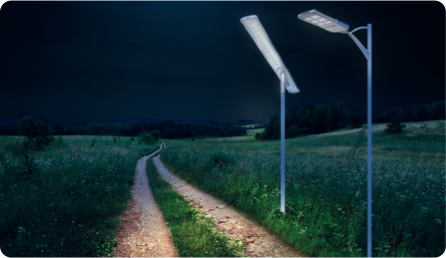
James Ellsmoor
Director and Co-Founder of Solar Head of State
We interviewed James Ellsmoor, the director and co-founder of Solar Head of State to learn more about what sparked his passion for sustainability issues in Small Island Developing States. We learned about his goals, the challenges he faces, what his life looks and what we can expect from him in the future!
What initiated your passion for addressing sustainability issues in Small Island Developing States (SIDS)?
These islands have their own features and complexities, so the challenges that arise in the pursuit of sustainable development are very specific and, sometimes, overwhelming. I’d dare to say my passion began with the potential that lies within those challenges. These islands have the potential of embracing innovative answers through modern technology and sharing good practice, building digital bridges between far-flung islands can be a fantastic way to share information.
The Solar Head of State concept is unique. How did this idea come about?
The model was originally inspired by a campaign initiated in 1979 by US president Jimmy Carter who had solar water heaters installed on the White House to conserve energy and set an example for the American public amidst an energy crisis.
In 2010, the President of the Maldives followed suit and in partnership with Sungevity we installed solar on the Maldivian Presidential Palace. This bold vision for implementing renewable energy was a catalyst for the creation of Solar Head of State.
Which countries were onboard immediately with your SHOS concept?
The first collaboration we had was with President Mohamed Nasheed to install solar panels on the Muliaage, the Official Presidential Residence of the Maldives. At that time, President Nasheed understood the need to lead with action, and worked to promote renewable energy in one of the countries that stand to lose most from climate change.
Saint Lucia and Jamaica have also shown to value the work of Solar Head of State as a commitment to embrace sustainable energy systems. We now have further partnerships with the Organisation of Eastern Caribbean States (OECS) and Pacific Island Development Forum (PIDF) which together means 20 installations over the next two years.
How do the economic conditions in SIDS differ from North America and Europe that make solar more attractive?
SIDS produce less than one percent of global greenhouse gases, yet they are highly vulnerable to the impacts of climate change, including coastal erosion, coral bleaching, ecosystem destruction, and adverse effects on crops and fisheries.
In contrast to these unfavourable elements, for instance, small size can actually be a blessing, and several SIDS, including the Maldives, Tuvalu and several Caribbean island states, are working to achieve “climate neutrality” through the use of renewable energy and other approaches.
SIDS are ideal locations for pilot projects in renewable energy and other areas, which can then be rolled out in other territories (such as North America and Europe) on a larger scale. SIDS are also leading the way in ocean conservation efforts, and some of the largest Marine Protected Areas in the world are being established in the Pacific and incorporated into the Pacific Island Forum Oceanscape initiative.
You’ve described yourself as a “digital nomad” a person who travels extensively and works remotely. As a digital nomad, how has your lifestyle allowed you to track climate change in real life (i.e. seeing incremental changes in climate at these various locales over the years)?
SIDS produce less than one percent of global greenhouse gases, yet they are highly vulnerable to the impacts of climate change, including coastal erosion, coral bleaching, ecosystem destruction, and adverse effects on crops and fisheries.
In contrast to these unfavourable elements, for instance, small size can actually be a blessing, and several SIDS, including the Maldives, Tuvalu and several Caribbean island states, are working to achieve “climate neutrality” through the use of renewable energy and other approaches.
SIDS are ideal locations for pilot projects in renewable energy and other areas, which can then be rolled out in other territories (such as North America and Europe) on a larger scale. SIDS are also leading the way in ocean conservation efforts, and some of the largest Marine Protected Areas in the world are being established in the Pacific and incorporated into the Pacific Island Forum Oceanscape initiative.
Jimmy Carter installed solar panels on the White House in 1979, yet solar energy wasn’t accepted by the general public until the Obama administration was in office. India and China have erected massive solar farms in the last decade. Meanwhile, many of the countries you’re working with have publicly adopted solar. What do you believe is the tipping point, for the leadership or the public, to adopt solar energy as a viable alternative?
Understanding that these technological developments can mitigate the climate change effect on the long term. Even though environmentalism is somewhat fashionable nowadays, people don’t seem to really understand the massive impact that renewable energy can have on the welfare of the environment.
What do you think is the responsibility and role for government is in the carbon reduction fight? Do you think they have a limited role, do you believe governments should have an all hands on deck approach or something more collaborative between the private and public sector?
Collaboration will always be needed amongst all relevant parties (civil society, academia, private and public sector), but there’s no doubt that the governments hold the biggest responsibility in terms of applying realistic and tangible changes to fight carbon reduction. Systematic modifications ought to be made in order to achieve fossil disruption within the international community and become truly sustainable in the way we create, treat and deal with energy.
DEELAT Industrial’s mission is to get cities and towns across the United States, Europe, Canada and Australia to adopt solar street lights in their public places. What do you think can be done to push municipal governments in this direction? Do you think cost is a major factor holding cities back from doing this? What do you see happening in the world in relation to full adoption of solar street lights?
Costs have proven to be a pivotal point on this, but clean-tech companies have become resourceful nods which are capable of developing projects in the cities. It should not be seen as a disadvantage, but rather an opportunity. In order to push municipal governments towards the adoption of solar street lights, the political engagement of civil society has to consciously increase in order to have more representatives that are capable of pushing this from the inside. I could not say for sure what the future is on solar street lights, but it certainly is an attractive challenge to pursue.
What are the programs you’re working on now to promote solar in SIDS?
Recently, I launched the Virtual Island Summit, a digital conference where 1000+ policymakers, entrepreneurs, academics and NGO leaders share their expertise on island communities bringing examples of good practices from around the world. We had almost 4,000 participants from around the world from a wide variety of islands.







